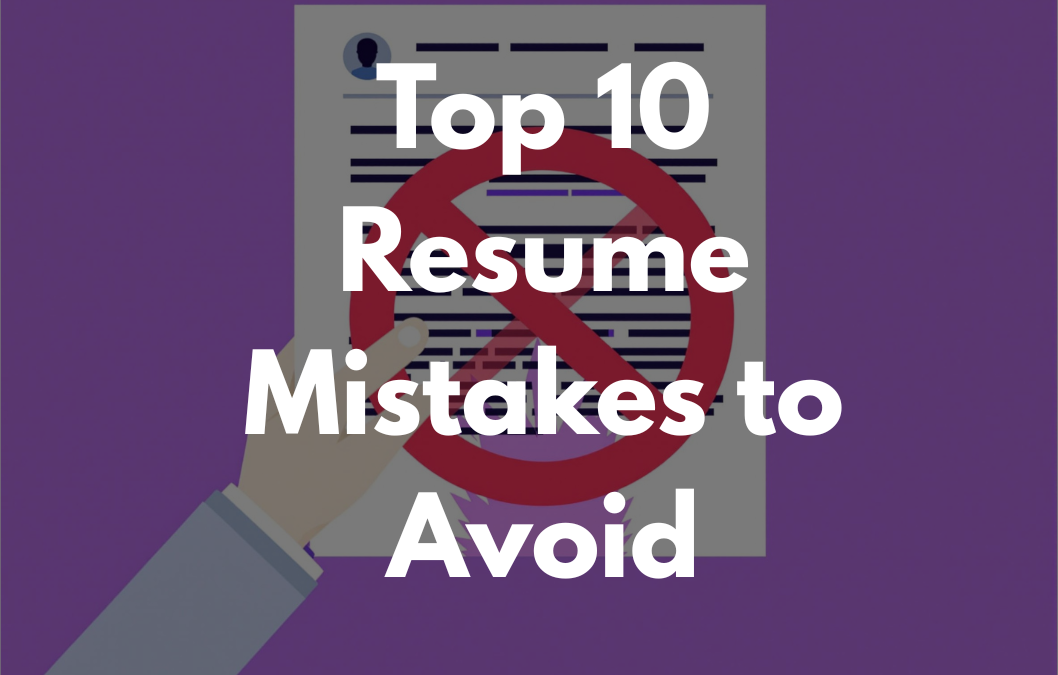Your resume is your golden ticket to landing your dream job—or at least getting your foot in the door. But let’s face it: crafting the perfect resume can feel like a mix of rocket science and brain surgery, minus the PhD. If you’re guilty of a few resume blunders (we’ve all been there), don’t worry—you’re not alone. Today, we’re diving into the Top 10 Resume Mistakes to Avoid and how you can fix them with a smile on your face and a spring in your step. Buckle up, because your resume is about to get a major glow-up!
1. Spelling and Grammar Goofs: It’s a Résumé, Not a Résumess
First impressions matter, and if your resume is riddled with typos, hiring managers might think you’re just not that into details. We get it—sometimes “detail-oriented” turns into “detal-orientd” at 2 a.m. But don’t let autocorrect be your downfall.
- Why It Matters: Spelling and grammar mistakes scream unprofessionalism. Even if you’re the best candidate for the job, sloppy errors can knock you out of the running.
- How to Fix It: Use spell check, grammar tools like Grammarly, and have a friend or colleague proofread your resume. Better yet, read it out loud—it’s like a spell-checker for your brain.
- Pro Tip: Don’t rely solely on technology. Sometimes “manager” becomes “manger,” and spell check won’t catch it.
2. Using a Generic Resume Template: Snooze Alert!
If your resume looks like it was pulled straight from a 2005 Word doc template, it’s time for a makeover. Generic resumes are like plain toast at a gourmet brunch—boring and forgettable.
- Why It Matters: A cookie-cutter resume won’t stand out in a sea of applicants. Hiring managers want to see you, not a template.
- How to Fix It: Use modern design tools like Canva or online resume builders like 1Application.me. Customize your resume to reflect your personality and the job you’re applying for.
- Pro Tip: Keep it clean and professional, but don’t be afraid to add a pop of color or a sleek font (just skip Comic Sans, please).
3. One Size Fits All: Tailor Your Resume, People!
Sending the same resume to every job is like wearing flip-flops to a black-tie event—completely out of place.
- Why It Matters: Hiring managers can smell a generic resume from a mile away. They want to see how your skills align with their specific needs.
- How to Fix It: Customize your resume for each job by tweaking your skills, experiences, and keywords to match the job description.
- Pro Tip: Create a “master resume” with all your experiences and pull from it to craft tailored resumes for specific roles.
4. Overloading with Buzzwords: Are You Really a Ninja?
Here’s a truth bomb: no one is actually looking for a “synergy-driven thought leader ninja.” Overusing buzzwords can make your resume sound like a corporate cliché generator.
- Why It Matters: Buzzword overload can make your resume feel empty and insincere. Employers want real skills, not fluff.
- How to Fix It: Focus on concrete achievements and measurable results. Instead of saying you’re “dynamic,” say you “increased sales by 25% in Q4.” Numbers speak louder than buzzwords.
- Pro Tip: Use action verbs like “led,” “optimized,” or “achieved” to make your accomplishments shine.
5. Ignoring Keywords: The ATS Is Always Watching
Applicant Tracking Systems (ATS) are the gatekeepers of modern hiring. If your resume doesn’t include the right keywords, it might not even make it to a human.
- Why It Matters: ATS scans for specific terms from the job description. Without the right keywords, your resume might get ghosted.
- How to Fix It: Carefully read the job posting and sprinkle relevant keywords throughout your resume. Don’t overdo it—keyword stuffing is a big no-no.
- Pro Tip: Use tools like Jobscan to see how your resume stacks up against the job description.
6. Too Much Fluff, Not Enough Substance
Hiring managers don’t have time to read your entire life story (sorry, not sorry). Keep it concise and focus on what actually matters.
- Why It Matters: Recruiters spend an average of 6-7 seconds on your resume. If it’s too long or filled with irrelevant details, they’ll move on.
- How to Fix It: Stick to one or two pages max. Highlight the most relevant experiences, and cut out any roles that don’t add value.
- Pro Tip: Use bullet points for easy readability. Each bullet should be like a mini-mic drop—short, impactful, and to the point.
7. Design Disasters: Don’t Blind the Recruiter
Your resume shouldn’t look like a Picasso painting (unless you’re applying to art school). Over-the-top designs and hard-to-read fonts can make your resume more frustrating than fabulous.
- Why It Matters: A poorly designed resume distracts from your qualifications. If it’s hard on the eyes, it’s hard to read.
- How to Fix It: Stick to clean lines, plenty of white space, and professional fonts like Arial or Calibri.
- Pro Tip: Test your resume on different devices to make sure it looks great everywhere, from desktops to mobile.
8. Forgetting Contact Info: Who Are You Again?
Believe it or not, people actually forget to include their contact information. Don’t let this rookie mistake cost you the job.
- Why It Matters: If hiring managers can’t contact you, all your hard work goes to waste.
- How to Fix It: Include your phone number, email address, LinkedIn profile, and portfolio (if applicable).
- Pro Tip: Double-check that your email address is professional. “[email protected]” won’t cut it.
9. Lying on Your Resume: Don’t Fake It to Make It
We know it’s tempting to “embellish” your skills, but honesty really is the best policy. Getting caught in a lie is a one-way ticket to rejection town.
- Why It Matters: Employers often verify your credentials. If they find out you lied, your credibility is toast.
- How to Fix It: Be truthful about your skills and experiences. If you’re lacking in some areas, focus on transferable skills or take online courses to fill the gaps.
- Pro Tip: Confidence beats exaggeration. Highlight what you do bring to the table.
10. Not Including a Cover Letter: The Cherry on Top
Some people think cover letters are optional, but they’re not. A great cover letter can give your resume the extra boost it needs.
- Why It Matters: Cover letters let you showcase your personality and explain why you’re the perfect fit for the role.
- How to Fix It: Write a tailored cover letter for each job. Keep it concise and focus on how you can solve the company’s problems.
- Pro Tip: Use the cover letter to tell a story about your career. Make it memorable and engaging.
Wrapping It Up: Your Resume, But Better
Crafting a killer resume doesn’t have to be rocket science. By avoiding these common mistakes, you’ll be one step closer to landing your dream job. Remember, your resume is a reflection of you, so make it count. Now, go forth and conquer the job market like the rockstar you are!
Looking for extra tips? Check out 1Application.me for resume-building tools that’ll take your job search to the next level. Don’t forget to keep learning—resources like Indeed’s Career Guide are a great place to start!

